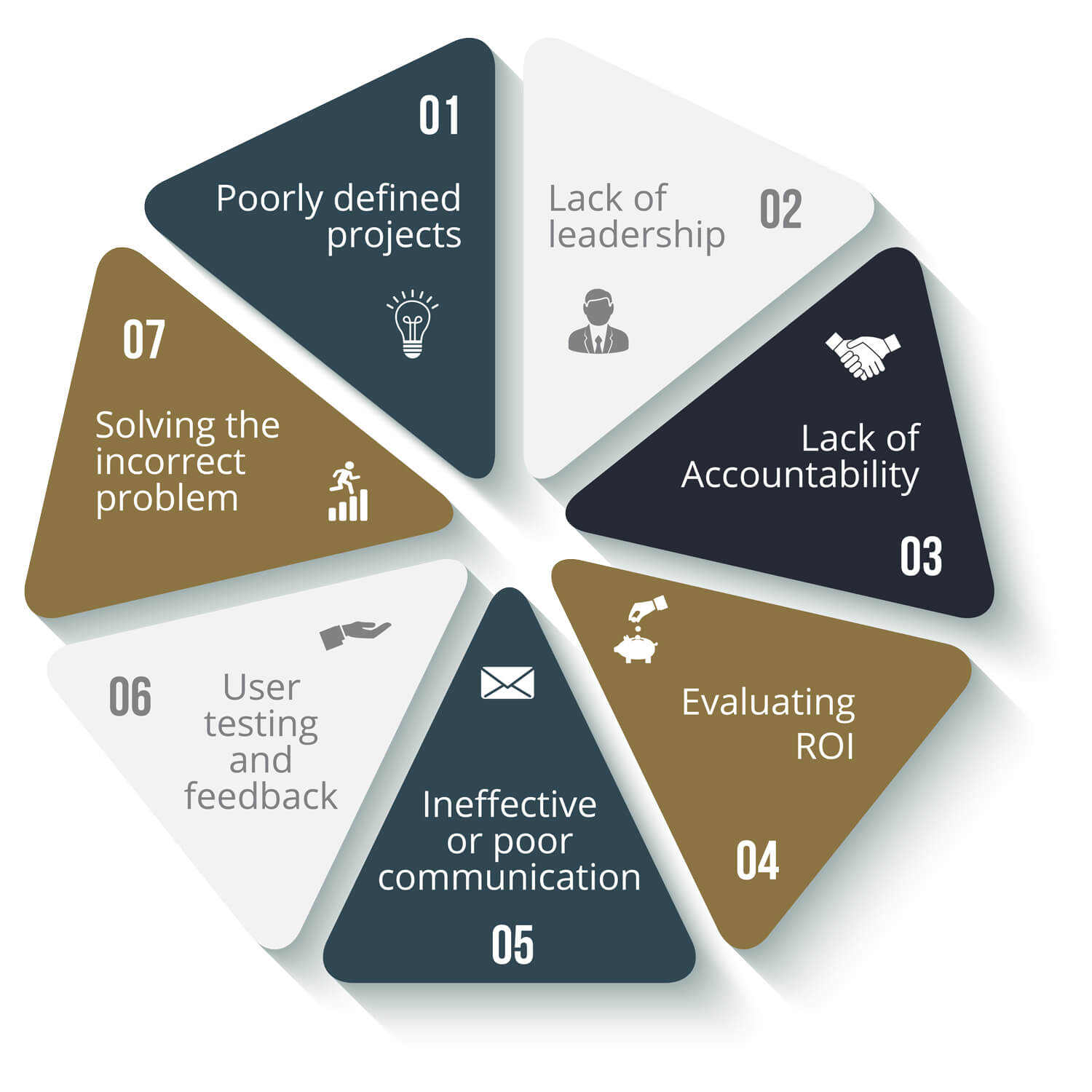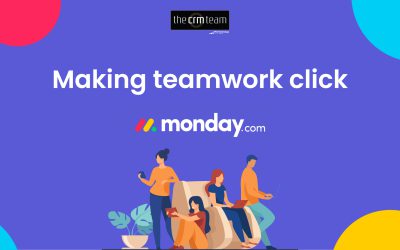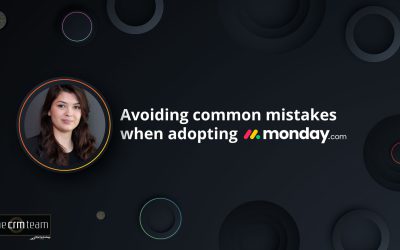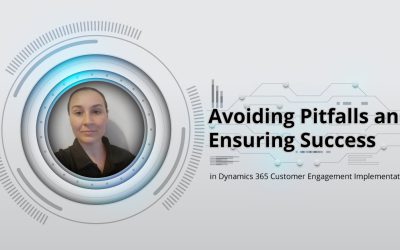The power of User Adoption
– A quick Google search defines inertia as “the tendency to do nothing or to remain unchanged,” while Wikipedia defines it as “the resistance of any physical object to a change in velocity.” This includes changes in the speed or direction of motion. One element of this quality is the tendency of things to continue travelling in a straight path at a constant speed in the absence of external influences.” It should come as no surprise, therefore, that individuals, by definition, oppose change. It’s perfectly normal and natural. Expect some resistance when implementing a new system in an organization; it’s natural, but for goodness sake do something about it. Apply the force that causes them to shift direction.
You must have a User Adoption Strategy in place.
Whether you believe in creation theory, are a big-bang fan, or anything else, there is one unavoidable truth:
Even the most ideal system is vulnerable to failure due to an internal element that far too many businesses overlook and disregard in their planning.
Who is the perpetrator? If you are not proactive, the same people for whom you made this paradise may corrupt it and turn it into a wasteland.
Your most cherished users are your greatest potential danger.
Simply put, we must reduce this risk…
History has shown that implementation efforts will fail in the absence of a strong user adoption strategy.
7 Reasons Why Technology Projects Fail…
I just bought a Haval Jolion Super Luxury.
To replace my 2015 Volvo XC60 T6 AWD R-Design Polestar, I would have loved a Volvo XC40 or perhaps the considerably smaller Volvo S40. Any vehicle would have sufficed as long as it was a Volvo, but my budget protested loudly. I didn’t know anything about the Haval brand. So I conducted my research and found some extremely intriguing things about these vehicles, to the point where I was so pleased that I tracked down a car 500km away and had it delivered to me within 5 days, despite the 3-month waiting list for brand new vehicles. Because I was loyal to the brand I have owned before, I almost missed out on what I now consider to be the finest vehicle I have ever owned.
The point is that no matter how elegant and technologically advanced a car is, if no one embraces and utilizes it as soon as it leaves the factory, it may as well be a bicycle. This is a pretty typical end-user problem. Why should I use Excel when I already have this handy calculator? I don’t require SQL because I keep all of my client information in Excel. I don’t need the Power Platform because my SQL database has all of the information I want. People are naturally resistant to change from what they have gotten accustomed to and feel at ease with.
Alan Lee-Bourke is a Principal Consultant in Microsoft’s Adoption and Change Management Global Practice, a Prosci Certified Advanced Instructor, a Prosci Experienced Practitioner, and the Director of the Scotland Association of Change Management Professionals.
In a recent article titled “7 REAL REASONS WHY TECH PROJECTS FAIL,” he provides the following frightening statistics:
- 25% of IT projects fail outright
- 20% to 50% demonstrate no ROI
- and up to 50% require extensive revision when completed
The 7 reasons are…

1. Poorly defined projects – this definition should cover more than just WHAT we are doing, but also:
– Why are we doing this?
– Why are we doing it right now?
– What will happen if we don’t?
2. Lack of leadership – An implementation project should never be confined to the IT department. Implementation is a business project which needs a strong key sponsor, who is active and visible – and one who will build a sponsor coalition and communicate effectively.
3. Lack of Accountability – Businesses simply must take responsibility for managing the change process. In our world that means getting users through the ADKAR process for them to make the project successful.
4. Ineffective or poor communication — Effective communication is crucial in change management.
5. User Testing & Feedback – We must focus on the end-user’s DESIRE to step out of their comfort zone and use the system.
6. When we evaluate ROI – When we go live, we will begin to see genuine business benefits from a people-dependent project.
7. Solving the incorrect problem — What are the issues, based on what your end-users are telling you? To put it another way, why would they want to switch to the new system?
At The CRM Team, we believe that to gain and maintain credibility, User Adoption Strategies must be actively led from the top down. The higher up, the better. The key sponsor should preferably be a member of the executive team – the CEO, MD, CIO, or CTO – and their message should be: “I am completely in support of this initiative.” The primary sponsor should then be supported by a Sponsor Coalition comprised of managers and supervisors who are in charge of influencing user behaviour in the departments affected by this project.
It is vital that the Key Sponsor and the Sponsor Coalition drive this change and emphasize the importance and urgency of the change. Their personal engagement is critical to the project’s success.
Reward and Recognition
A strong Recognition and Reward system would motivate and inspire users and fuel the User Adoption Drive.
The Recognition and Reward strategy can be built around key metrics such as
In terms of sales:
- Which Business Unit is working the hardest to increase sales?
In terms of Customer Service:
- The number of cases that have been resolved.
Just to name a few….
These are small steps to ensuring optimal user adoption. Each step building on the momentum and energy generated by the previous one.
Conclusion
Friedrich Nietzsche stated many things, most of which I disagree with, but one of them remained with me: “He who would learn to fly one day must first learn to stand and walk and run and climb and dance; one cannot fly into flying.”
On the perilous journey toward User Adoption we must be careful to take each of these little steps to ensure that our system implementation does not crash and burn, but that it will fly and take your organization to new heights.
When you succeed, we succeed!

Mark James – Head of Training & User Adoption
Mark has been a Microsoft Certified Trainer for many years and has been training Dynamics since CRM version 4.0.
He specialises in Dynamics 365 end-user training and has trained across the UK, Africa, and the Middle East. Mark is proficient in Microsoft Dynamics 365: Sales, Service, Deployment, and Customization & Configuration.
Transform your business
Don’t miss more articles by The CRM Team
Breaking Down Silos: How monday.com Unifies Teams Across Departments
Breaking Down Silos: How monday.com Unifies Teams Across DepartmentsIn today’s fast-paced business environment, the biggest roadblock to efficiency isn’t just outdated processes—it’s siloed teams. Different departments often operate in isolation, leading to...
Avoiding common mistakes when adopting monday.com
Avoiding common mistakes when adopting monday.com - Unlock Its Full Potential for Business Successmonday.com has transformed how businesses manage projects, workflows, and team collaboration. It’s a powerful Work OS that promises automation, real-time insights, and...
Avoiding Pitfalls and Ensuring Success in Dynamics 365 Customer Engagement Implementation
Avoiding Pitfalls and Ensuring Success in Dynamics 365 Customer Engagement Implementation by Taryn EngelbrechtImplementing Dynamics 365 Customer Engagement can be a game-changer for organizations looking to enhance their digital presence and improve customer...


